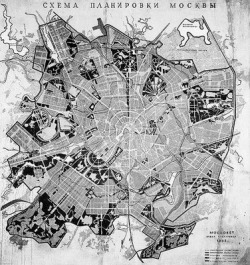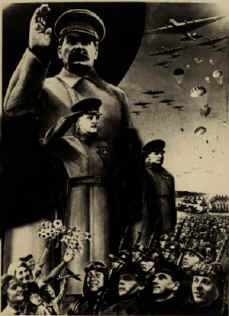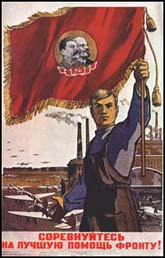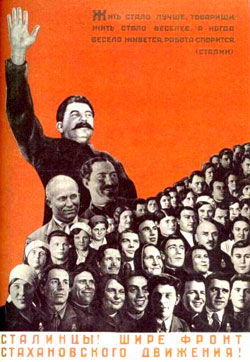INDUSTRY
Background

“We are 50 or 100 years behind the advanced countries. We must make good this lag in ten years or be crushed.” –Stalin, 1931
When Stalin took control of the Soviet Union, he began his plan of massive industrialization. Stalin claimed that in order for Russia to live among the major capitalist powers of the world, economic growth was necessary.
When Stalin came into power the economy was in devastation due to the Russian Civil War and depression. The economy was also in a poor international position and possessed a weak level of foreign capital from exports. But Stalin did have some advantages when he began economic development. Those were the USSR’s massive international resources, a useful infrastructure of railways, educated citizens, health services, and housing.
Industrialization

Stalin’s plan of industrialization was financed by restraining consumption of the ordinary citizen, to ensure that capital went for re-investment into industry, and by liquidation of the kulaks.
The scale and speed of industrial development under Stalin’s rule was enormous. Soviet Union industry was augmented by the state’s mobilization of resources. Western economics estimate that the annual growth rate of industry was 13-14% with a 3-fold increase in oil output, 4-fold in iron and steel, and 5-fold in coal. The Soviet Union also significantly caught up with one of the world’s superpowers at the time, Germany. In 1927 the USSR produced 25% as much steel as Germany, by 1940 Russia produced 90% as much.
During the economic growth, new industries were developed as well. These included aircraft, aluminum, and a new skilled workforce. Industrial complexes such as Magnitogorsk and Kuznetsk were also constructed, along with automobile, heavy machinery, and tractor plants. The armament industry was expanded as a result from the growing threat of Germany and Japan.
The key factor in industrial growth was the irrefutable and determined leadership of Stalin. There was powerful state control over many sectors of the economy including food supplies, retail trade, and public institutions. Stalin created the most rapid changes in investment and production ever seen by man in such a short period of time.
Five Year Plans

The Five Year plans were a series of centralized exercises in the Soviet Union to produce fast economic development. Although there were breakdowns and failures, the two Five Year plans achieved rapid industrialization from a low economic base. The Soviet government declared the plans were a success, and stated that the Industrial Production Plan was fulfilled 97% in the first four years, with heavy industry at 108% completed. Stalin’s justification for the Five Year Plans came from the fact that there were significant increases in the output of coal and iron, which would fuel any future development.
While great strides were made in Industry because of the Five Year plans, it came at the price of millions of lives. The first Five Year Plan, 1928 to 1932, was extremely brutal on industrial workers, setting impossible high quotas to achieve, and requiring most to work 16 to 18 hour workdays in dangerous conditions. Failure to fulfill quotas resulted in treason charges. Historians estimate that 127,000 workers died in the first four years. Also because of the use of resources for industry along with decreasing productivity, a famine occurred. Force labor was also commonplace in Stalin’s industry, with inmates being used as expendable resources. Conditions did improve somewhat during the second Five Year plan.
Central Planning

The Five Year plans were meant to optimize the use of resources, in contrast to Western capitalism. The planning system is known as “taut” planning, due to the strain put on the use of resources. Resources were channeled to where they were most needed, putting a strain on the Russian people. Although it encouraged Soviet citizens, since it dramatized the struggle for a developed USSR and gave the people hope and an idea of something to work for.
During the rapid industrialization years, the Russian people became very familiar with the idea of hard work for little pay. Wages fell by 50% between 1928 and 1936, since Stalin wanted to reinvest capital into the economy, instead of the consumers. Coercion was used broadly; labor laws were very severe to prevent absence and laziness. Many conclude that Soviet massive industrial growth was achieved by coercion and the sacrifices of the citizens and hope for future wealth.
